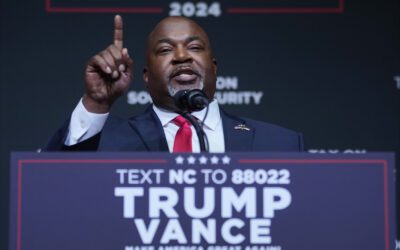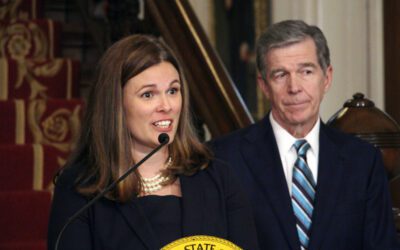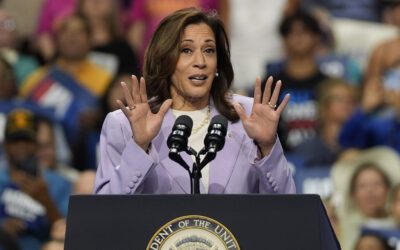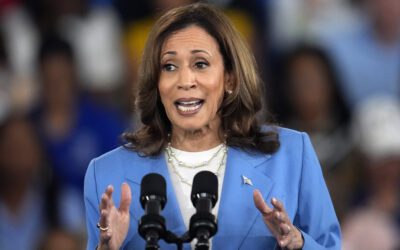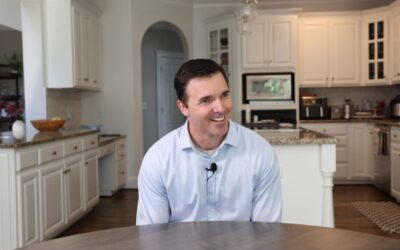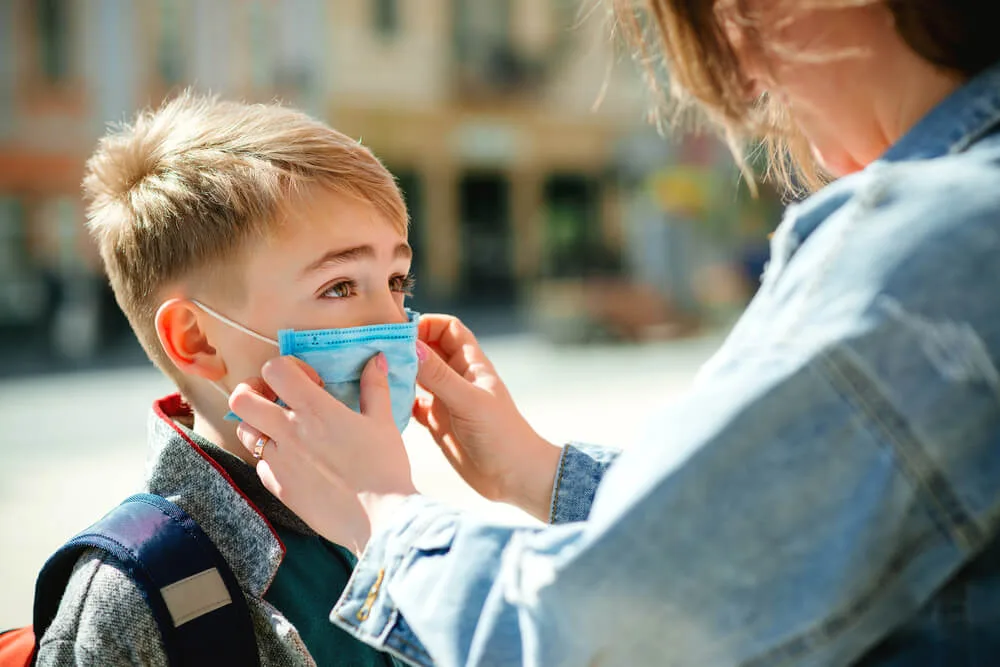
Image via Shutterstock
Gov. Roy Cooper announced a hybrid approach to classroom learning this fall, with a mix of in-person and virtual learning.
Schools will reopen in August in a hybrid system of in-person and remote learning, Gov. Roy Cooper said on Tuesday, while giving individual districts flexibility to go entirely online if needed.
His Plan B, Cooper said, is a “measured, balanced approach” that essentially seeks safe passage between two clashing and equally treacherous ideas: The risks of keeping the state’s 1.5 million public school students out of school completely, and the risks of exacerbating a pandemic threatening to spiral out of control.
The number of cases, deaths, and hospitalizations are rising, even if not quite at the explosive rates seen in Texas, Arizona and other states accused of opening their economies too quickly. Along with the schools’ announcement, Cooper said he was extending the state’s Phase 2 restrictions, scheduled to expire on Friday. But, the dangers of keeping children out of school entirely is just as real, officials say, posing severe developmental risks for children and economic risks for parents needing to get back to work.
“There are no perfect answers,” said Dr. Mandy Cohen, the NC Department of Health and Human Services Secretary, at the briefing.
Plan B will require schools to follow several detailed and safety protocols, including:
- Face covering requirements from kindergarten through high school.
- Limits on the total number of people in the building at one time, so that 6 feet of distancing is possible.
- Districts’ abilities to choose for themselves whether to have children alternate days or weeks they attend school.
- Symptom screenings, including temperature checks, to take place daily before students can enter buildings.
- Ways to isolate students with symptoms.
- Schedules allowing time for frequent handwashing and cleanings of equipment and facilities.
- Limits on non-essential visitors and activities involving outside organizations.
- Providing students, faculty and staff with at least five reusable and washable masks.
- Detailed protocols for dealing with positive tests for teachers or students.
Districts Have Some Say in Fall Plans
One of the biggest components of the plan is the flexibility it grants each of North Carolina’s 115 school districts and public charter schools to respond to its specific needs.
While no district can fall below the baseline requirements of the plan, those in areas with surging or severe outbreaks can choose to go online only, Cooper said. A completely in-person school year, as state Republican leaders and President Donald Trump desired, will not be an option, however.
Legislative leaders quickly voiced their displeasure, as they have with many of Cooper’s approaches to the COVID-19 pandemic.
“Returning students to the classroom should be our top priority,” NC House Speaker Tim Moore, R-Cleveland, said in a statement. “But instead North Carolinians are experiencing the devastating impacts of Governor Cooper’s one-size-fits-all economic closures and policies that hinder broad recovery without protecting the vulnerable.”
Though not required, it will be “strongly recommended” that schools also implement one-way hallways, limit the number of students in cafeterias at any given time, and suspend assemblies.
“We know schools will look a lot different this year,” Cooper said. “They have to.”
RELATED: Teachers Say COVID-19 Too Much of a Risk to Reopen NC Schools
Cooper also reserved the right to tweak the plan according to changing COVID-19 infection numbers.
“The start of school is a month away for most of our children,” he said. “We know a lot can happen with the virus during that time.”
He encouraged superintendents to listen to its teachers in developing any specific plans.
“We will continue to watch our trends closely,” Cohen said. “If we see indications that we are changing quickly, or if there’s new scientific data that emerges, we will not hesitate to act.”
Surging COVID-19 Cases Delayed Decision
The schools’ announcement was originally scheduled for two weeks ago, but the surging coronavirus cases and hospitalizations, officials said, prompted the state to take more time with its decision.
“Planning for the upcoming school year has been full of difficult decisions,” Cohen said. “This has been a very stressful reality.”
But in developing Plan B with educators, she said, scientific evidence available now shows children less likely to be infected with COVID-19, and have less severe reactions if infected. It also appears that children are not spreading the disease at the same rates as adults.
In addition, she said, reopened schools around the world have not seemed to play a major role in spreading the virus.
“We weighed these factors against the conclusive evidence that school is critical to a child’s education, health, emotional and social well being and that missing school is actually harmful to children,” Cohen said.
A panel of Duke health officials on Tuesday morning, however, expressed a more cautious view of the data about how the virus affects children, even if they were unanimous about the importance of returning students to the classroom in some form.
Dr. Ibukun Christine Akinboyo, a medical director of pediatric infection prevention at Duke University Medical Center, said that most of the global success stories in reopened schools took place in areas where the community spread had been relatively contained.
There was no data that she knew of where schools reopened amid the same kind of surging cases seen in the United States.
“The United States is quite unique in its situation,” Akinboyo said. “We would be the first to reopen schools in that particular context.”
The current numbers in North Carolina were still worrisome enough, Cooper said, that the Phase 2 restrictions limiting the reopening of the economy, which were set to expire on Friday, would be extended another three weeks.
“We want to be done with this pandemic, but it is not done with us,” he said.
Eric Davis, the chairman of the NC State Board of Education, said that while the new school plan was vital, the existing overall guidelines for slowing the spread were just as important.
“Regardless of how we feel about this virus or how tired we may be, “ Davis said, “our students, teachers and staff members need us to lead: By wearing our masks, washing our hands, and staying 6 feet apart.”
Support Our Cause
Thank you for taking the time to read our work. Before you go, we hope you'll consider supporting our values-driven journalism, which has always strived to make clear what's really at stake for North Carolinians and our future.
Since day one, our goal here at Cardinal & Pine has always been to empower people across the state with fact-based news and information. We believe that when people are armed with knowledge about what's happening in their local, state, and federal governments—including who is working on their behalf and who is actively trying to block efforts aimed at improving the daily lives of North Carolina families—they will be inspired to become civically engaged.


Op-Ed: Studying the Holocaust remains vital to ensuring it never happens again
International Holocaust Day will be observed on January 27, 2024. This day commemorates the liberation of the Auschwitz concentration camp by the...

VIDEO: How Rural Broadband Is Coming to This North Carolina County
More than 1.1 million North Carolinians lack access to high-speed internet, a necessity of the modern economy. In Warren County, help is on the way,...
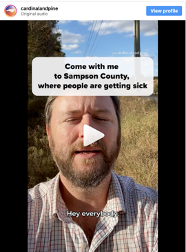
VIDEO: Sampson County puts Biden’s promise to boost rural infrastructure to the test
Locals in this rural NC county say their water and air is polluted by a PFAS-contaminated landfill, massive hog and poultry farms, and industrial...

VIDEO: Sampson County puts Biden’s promise to boost rural infrastructure to the test
Locals in this rural NC county say their water and air is polluted by a PFAS-contaminated landfill, massive hog and poultry farms, and industrial...

Mold and classes in trailers: Inadequate funding for schools is hurting NC communities
Schools across the state are dealing with dilapidated classrooms and buildings in need of significant repair or a total rebuild due to a lack of...



